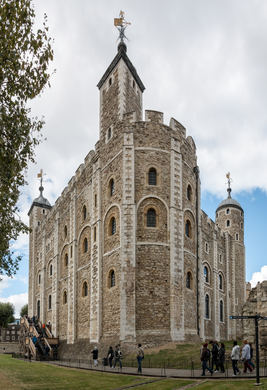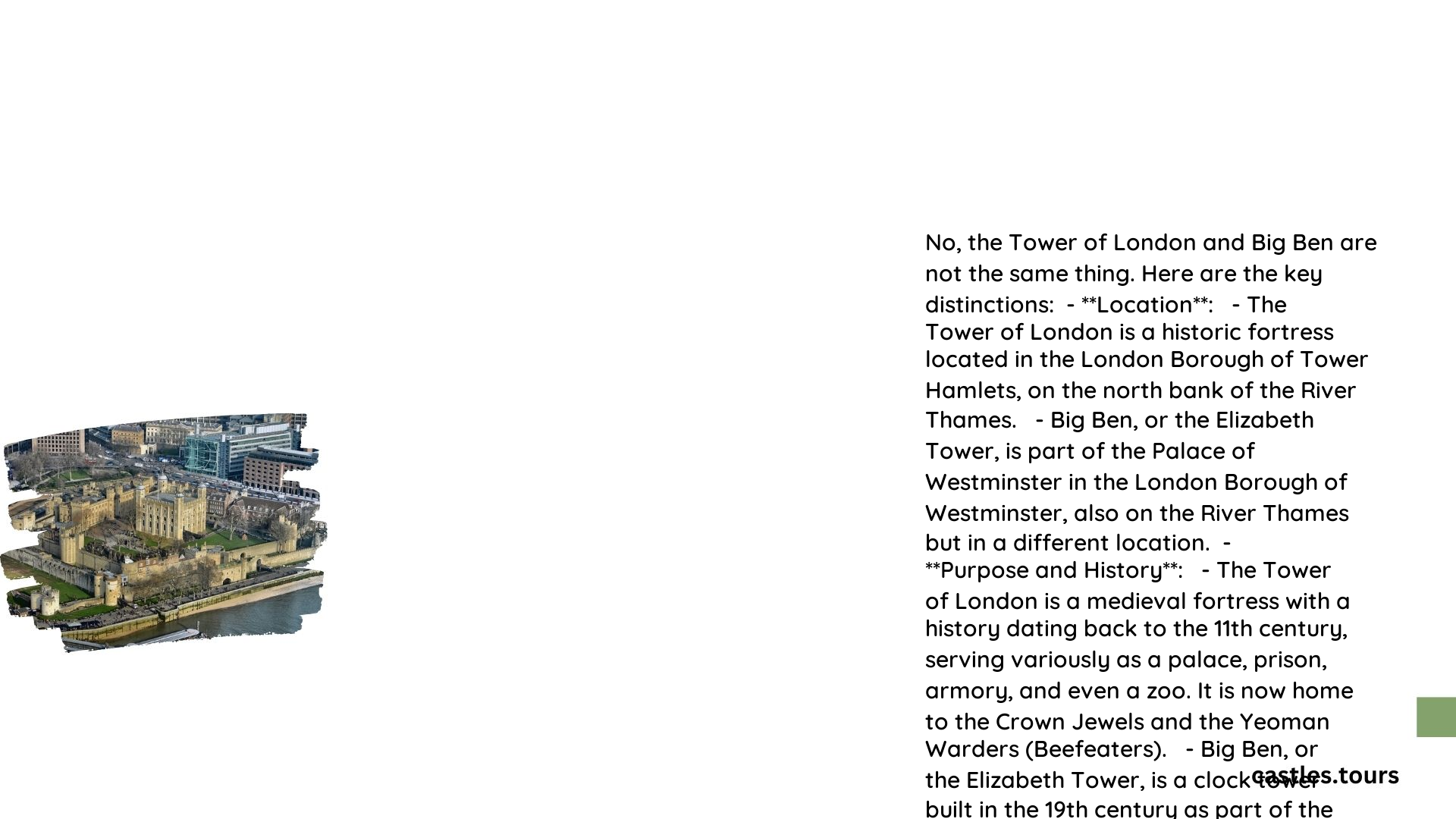The Tower of London and Big Ben are not the same thing. They are two distinct and iconic landmarks in London, each with its own unique history, purpose, and location. The Tower of London is a historic castle and fortress on the north bank of the River Thames, while Big Ben is the nickname for the Great Bell of the clock at the north end of the Houses of Parliament in Westminster.
What Are the Key Differences Between the Tower of London and Big Ben?

Historical Origins
Tower of London
- Founded: 1066 by William the Conqueror
- Purpose: Initially a royal residence and fortress
- Style: Norman architecture
Big Ben
- Completed: 1859
- Purpose: Clock tower for the Houses of Parliament
- Style: Gothic Revival architecture
What Are Their Primary Functions?
Tower of London
- Historic royal palace
- Fortress and prison
- Home of the Crown Jewels
- Tourist attraction
Big Ben
- Timekeeping for Parliament
- National timepiece
- Iconic symbol of London
- Tourist attraction
Where Are They Located?
The Tower of London and Big Ben are situated in different parts of London:
| Landmark | Location | Borough |
|---|---|---|
| Tower of London | North bank of River Thames | City of London |
| Big Ben | North end of Houses of Parliament | Westminster |
Distance between them: Approximately 2.5 miles (4 kilometers)
How Do Their Architectural Features Differ?

Tower of London
- Complex of multiple buildings
- Central White Tower
- Surrounded by defensive walls and a moat
- Medieval stone construction
Big Ben
- Single clock tower (Elizabeth Tower)
- Four clock faces
- Spire with pinnacles
- Neo-Gothic design with intricate stonework
What Historical Events Are Associated with Each Landmark?
Tower of London
- Imprisonment of notable figures (e.g., Anne Boleyn, Sir Walter Raleigh)
- Executions of royalty and traitors
- Storage of the Crown Jewels
- Home to the Royal Mint until 1810
Big Ben
- Survived bombing during World War II
- Chimed to mark significant national events
- Underwent extensive renovation from 2017 to 2022
- Renamed Elizabeth Tower in 2012 to honor Queen Elizabeth II’s Diamond Jubilee
How Can Visitors Experience These Landmarks?
Tower of London
- Open to public tours
- Guided tours by Yeoman Warders (Beefeaters)
- Crown Jewels exhibition
- Royal Armouries displays
Big Ben
- Limited public access (tours suspended during renovation)
- Visible from various vantage points in London
- Chimes can be heard throughout Westminster
What Are Some Lesser-Known Facts About Each Landmark?
Tower of London
- Home to a colony of ravens
- Legend says if the ravens leave, the kingdom will fall
- Has its own Constable and Governor
- Hosts the Ceremony of the Keys nightly
Big Ben
- The clock mechanism is accurate to within two seconds per week
- The bell weighs 13.7 tons
- Originally called the Clock Tower until 2012
- Has a prison room for misbehaving MPs
How Have These Landmarks Influenced Popular Culture?
Both the Tower of London and Big Ben have become iconic symbols of London and British culture, appearing in:
- Films and television shows
- Literature and poetry
- Postcards and souvenirs
- International news broadcasts
Their distinct silhouettes are instantly recognizable worldwide, representing different aspects of British history and governance.
In conclusion, while both the Tower of London and Big Ben are significant London landmarks, they are separate entities with unique histories, functions, and cultural impacts. The Tower of London represents medieval royal power and national defense, while Big Ben symbolizes modern democracy and timekeeping. Together, they offer visitors a rich tapestry of London’s past and present.
References:
1. https://www.hrp.org.uk/tower-of-london/
2. https://www.parliament.uk/about/living-heritage/building/palace/big-ben/
3. https://www.english-heritage.org.uk/visit/places/tower-of-london/
4. https://www.londonpass.com/london-attractions/tower-of-london.html
